|
|
|


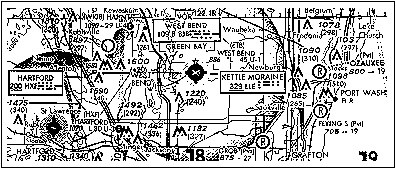
|
Upcoming Chapter Events A Rose is a rose … Mailbag - 2002 Air-Camper Response CFI Tips Membership Report Member Profile JUST FLYING BY Board Meeting Minutes |
A new flower is blooming at West Bend Airport. OK, OK, not exactly the kind you’d buy
at a garden shop but nonetheless a colorful decoration to an otherwise ho-hum
airport ramp. Through hours and hours
of volunteer labor, hundreds of dollars of donated materials, and the skillful use
of high-tech equipment, the result is not only a colorful graphic design, but also
a useful geodetic calibration device. What is a compass rose? Historically
the compass rose design originated as an artistic decoration to the magnetic
compass card of sailing ships. The
magnetic compass being the sacred instrument, artists embellished it with so many
“petals” that it became know as a compass rose. The name stuck. Today even
a simple set of lines painted on the ground and aligned with the earth’s
magnetic field is called a compass rose. West Bend EAA Chapter 1158 compass rose is a modern version of the
historic tradition. First of all
it’s big. How big? The cardinal points are 100 feet and with
the degree numerals, 108 feet. Is
this a record? Too soon to tell. It might be but since there is no registry for compass roses, time will
tell. It could, however, qualify for
a first. Contained within is an
accurately surveyed point with precise longitude and latitude measurements. Such publicly accessible points with
visible numerals are not rare but far from common.
The White House at Washington D.C., for example, has such a marker. Modern GPS use, however, brings about the
need to occasionally verify the accuracy of this satellite based navigation tool. Pilots may use this tool by simply taxiing
their aircraft to the center of the rose, aligning the nose with the selected
heading and noting the deviation between the onboard magnetic compass and the
painted one. The GPS waypoint can be similarly used. Projects like this
don’t just happen. Nearly a year
ago discussion started with the desire to provide for West Bend Airport a modern
accessible compass rose to replace the faded small one obscurely located. Chapter members, Paul Lupton and Dick
Kleinmann, explored design options and discussed with airport officials a suitable
location. The chosen location was
located far enough from large metal objects such as a hanger door and was in a
highly visible location. Since cost
was of prime concern to a non-profit organization, donors were obtained for the
pavement sealing and most of the paint. The
airport being city property and Dick being the city surveyor, a natural connection
occurred. Paul and Dick drew on a few
examples of compass roses and evolved the design to its final form. With the pavement sealing completed during
warmer weather in May, the layout of the points began. Nearly fifty gallons of Sherwin Williams
pavement paint were used beginning with hand edging, rolling, and concluding with
spraying the stencils to create the smaller designs. Working at 6AM, and occasionally in the
evening many members turned out to assist. Shown
in the accompanying photos are Dale, master painter, Carlson, Tom Ruhman, Russ
Kaye, Randy Finco, Jim Dricken, and many members who stopped by to
give their approval and support.
from Caitlin Webb
My name is Caitlin Webb and I attended Air Camp this year. I loved it. I wanted to thank you all very very much for the experience. It was a great opportunity for me because I am interested in aviation and hopefully I will become a pilot. My dream is to join the Air Force Academy and be a fighter pilot. Air Camp has inspired me to follow this dream. Thank you once again. I hope that Air Camp continues for many years to come. Also, I want to say a special thank you to Mr. Lupton because I think he did a great job.
Caitlin Webb
A few months ago I had the pleasure of a trip in our C172 to Arizona. My wife and my CFII son came along. Since we filed IFR for parts of the trip, the shared workload with my "crew" made the trip safer and much more enjoyable. The advantage of another person is obvious. "Cockpit" resource management, (whether or not there are other persons aboard) unfortunately, seems to have taken a back seat. This CFI Tips is a reminder that there is much that a single pilot can do to manage the resources at his/her fingertips.
Beginning with the P.O.H (Pilot's Operating Handbook), this is a precious document every pilot should be familiar with. Reading how the emergency gear extension works when a real emergency is happening is hardly good management of this resource. Read and understand your P.O.H. on the ground! The latest avionics, especially GPS units have extensive and complex features. Learn them on the ground as much as possible. When airborne, our radios are an extension of human resources on the ground. Learn to use Flight Watch, Flight Following, and Radar Services. Careful attention to traffic on Unicom can avert a near miss or worse! Passengers
can locate maps, watch for traffic, or serve a snack or beverage. It seems almost silly to point out the instrument panel as a resource, yet accidents occur frequently enough, traced to such simple things as failing to monitor fuel supplies, ignoring warning lights, or misinterpreting the flight instruments themselves! And, oh, how many times have we all skimmed over a checklist because everything was OK last time?
Next time: Understanding wind on take-offs and landings.
Almost finished.
Touch up of the colors and addition of the numerals to come. NR Asphalt donated the pavement sealing. Nice job with that spray wand guys! Dick and Paul. “Just a
hair to the right” Dick was a stickler for accuracy. Dale, Mixmaster, Carlson. This
was the easy part! Several buckets of paint donated by Sherwin Williams. Every artist signs his work. The
Chapter 1158 signature goes on. “There’s a bright golden haze on the airport…”
Rodgers and Hammerstein should have been
here. Ah,
those 6AM work sessions. Dick and Russ position the numerals on What’s so special? It could be a first with this addition!![]()
Upcoming Chapter Events
8/21 Wed. 7pm Gunter Voltz, WWII Veteran pilot who flew with the German Luftwaff
9/18 Wed. 7pm John Duffy, Retired Air Force pilot flew KC97s, and a Vietnam vet
10/16 Wed. 7pm Green Bay Flight Service winter flying.
A Rose is a rose …
by Paul Lupton CFII

 Mailbag
Mailbag
Dear Chapter 1158 members,
 CFI Tips
CFI Tips
by Paul Lupton CfII
If you haven't heard of CRM by now someone might wonder what planet you're from. Although the buzz word/phrase has been around since at least the 1980s it still does not appear in the FAR/AIM (at least I couldn't find it). Nonetheless, searching the official FAA website resulted in over 300 listings. In the early days CRM was a spin-off from human factors research. Pilots, especially airline crews, saw it as psychologists meddling in a field better left to pilots. Today CRM is hot. Seminars can cost $150 a day, books have been written on it, and videos offer the latest findings.
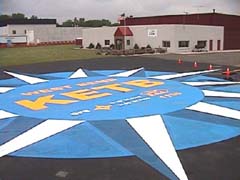
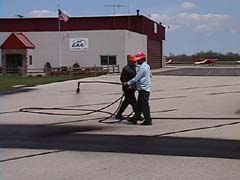
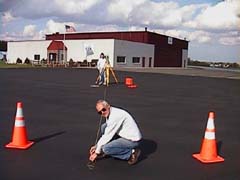
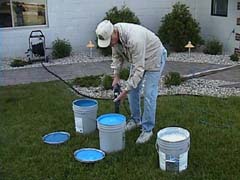
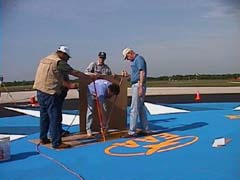
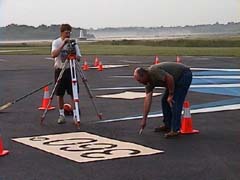
the cardinal points.
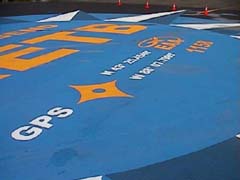


Membership Report
by Howard Kaney, Membership Chairman
We have two new members, Jeffrey Thorn and Don Curtes.
This brings us to a total of 77 members.
Welcome aboard!
This and all Kettle Moraine EAA Chapter 1158 newsletters are
provided for your enjoyment only. No claim is made and no
liability is assumed, expressed or implied as to the accuracy
or safety implications of any material presented. Viewpoints
of the writers are not necessarily those of this or any EAA
Chapter or of the Experimental Aircraft Association (EAA).
Use of any of the material presented, whether by applying,
copying or quoting, is done solely at the risk of the user.

What attracts you to EAA?
Simple enough: airplanes and the desire to be around them and the people associated with them. Some of the finest people I have had the pleasure to know. We all have that common interest albeit with greatly varying degrees of knowledge. It is with a high degree of hope that I can learn from those with more and pass on what I've learned to others.
The most enjoyable experience I had working with this chapter has been.....
Wow, as funny as it may sound, the most pleasure has come from helping to remodel our home. An incredible sense of accomplishment and a pride in the knowledge that I contributed to what we have in a wonderful home. A close second has to be all the get-togethers with other chapter members after hosting such events as the B-17, open houses, dinners, and just work parties.
The funniest aviation story I can recall is......Well, let's just say that if you happen to attend our B17 event this year, and you happen to be sitting around the Chapter garden patio late at night, you too may see the B17 tire ghost....
What do you look forward to accomplishing in our local chapter?
Bulding a large and involved member base in our chapter.
What is your favorite aircraft and why?
Heh, heh, Bonanza? When I first began flying I never thought such a fine airplane would be within my reach. I feel truly lucky to have the opportunity to own and to fly such a solid piece of machinery.
Anything else you'd like your fellow chapter members to know about you?
I have been with the chapter from the very beginning and served as the treasurer for two terms. Served on the board the entire time. I have been and remain committed to furthering the goals of the chapter in any way I can.
Thanks, Glen. If you have any questions about board members, Aeromart, or flying in general, contact Glen at gbrandt@execpc.com, or 262-268-1648.
![]()
 JUST FLYING BY
JUST FLYING BY
by Ernestine Lynfoot
What causes weather? Aided by the sun, the tilt and movement of the earth,
the gasses in the air, the cycles of moisture and the uneven surface of our
planet, the earth's atmosphere is constantly being heated, mixed, and moved
about. Without all this atmospheric stirring, we'd have no wind, no rain, no
storm, no snow.
Meteorologists who forecast the weather, known as Operational or Synoptic Meteorologists, are among the largest group of specialists. They study information on air pressure, temperature, humidity, and wind velocity, and apply physical and mathematical relationships to make short and long range weather forecasts. Their information comes from satellites, weather radar, and from remote sensors and observers in many parts of the world.
Physical Meteorologists study the atmosphere's chemical and physical properties, the transmission of light, sound, and radio waves, and the transfer of energy in the atmosphere. They also study factors affection formation of clouds, rain, snow, and other weather phenomena.
Climatologists analyze past records of wind, rainfall, sunshine, and
temperature in specific areas or regions.
by Don Miller, Secretary
March 2002
Present: Glen Brandt, Mark Hanrahan, Don Miller, Don Shane, Jim
Dricken, Dan Staehler, Randy Finco, Chris Good, Gene Zorn.
Minutes of previous meeting reviewed. Approved, motion by Don Shane.
Seconded by Mark Hanrahan.
Don Shane made an oral presentation of the treasurers report, as the
bank statements had just arrived. The written report will be presented
at the next meeting. Motion to accept by Don Miller. Seconded by Paul
Lupton.
The budget committee reported no activity, as they are awaiting data
input.
It was decided to return the current projection TV in favor of newer
technology. Dan Staehler will research the market and acquire a newer
system.
Gene Zorn presented the planned Young Eagle dates:
Thursday, 2 May 2002 at 17:00
Howard Kaney presented the membership update. There are as of 6 March,
48 paid and 30 unpaid memberships. Howard will follow up on the late
payees.
B-17 visit - No activity reported.
April 2002
Present: Glen Brandt, Mark Hanrahan, Don Miller, Jim Dricken, Don
Shane, Dan Staehler, Randy Finco, Paul Lupton, Gene Zorn.
B-17 visit - Posters have arrived but the dates are incorrect. Ron will
address this with headquarters.
The FAA answer to this question: Variation of solar energy received by the
Earth's regions.
Source: The Weather Channel

Board Meeting Minutes
Saturday, 4 May 2002 at 13:00.
Conduit for the new lighting will be installed. We will borrow a lift
truck to facilitate the aerial work. Project to begin 23 March (Actually
began 16 March).
AirFest - We have begun holding volunteer meetings.
Air Camp - Plans are proceeding.
Randy outlined the speaker programs for the upcoming months. We are
planned through October (Except for August).
Motion to support the creation of a Compass Rose on the Airfield.
Accepted by Done Shane. Seconded by Chris Good.
Motion to adjourn by Jim Dricken. Seconded by Don Miller.
Minutes of previous meeting reviewed. Approved, motion by Mark Hanrahan.
Seconded by Paul Lupton.
The budget committee reported no activity, as the treasurer was out of
town.
The Boy Scout Aviation merit badge event has been postponed for one
year.
As of yet there are no new Young Eagle dates.
Facilities update: Ron will contact the roofing contractor to try and
establish a start date. The hangar lighting project is proceeding well.
Howard Kaney presented the membership update. There are as of 2 April,
59 paid and 11 unpaid memberships. Howard will follow up on the late
payees.
Don Shane presented the treasurers report. Approved by Ron Champeny.
Seconded by Paul Lupton.
Recognition Programs: Glen is working on a plaque for the projection TV
system.
Air Camp - Plans are proceeding.
Randy outlined the speaker programs for the upcoming months. We are
planned through October (Except for August).
Our second Chapter breakfast will be held 6 April 2002. We are looking
for small projects that can be addressed by the attendees.
We will plan to hold a combined Young Eagles/Old Buzzards day sometime
in May. Also an Open House/Recruitment day.
Motion to acquire a portable lit sign for advertising chapter events.
Estimated cost is approximately $500. Approved by Don Shane. Seconded by
Paul Lupton.
Motion to adjourn by Jim Dricken. Seconded by Don Miller.
Kettle Moraine EAA Chapter 1158
c/o Dan Staehler
2550 State Road 28
Kewaskum, WI 53040
8/21 Wed. 7pm Gunter Voltz, WWII Veteran pilot who flew with the German Luftwaff |